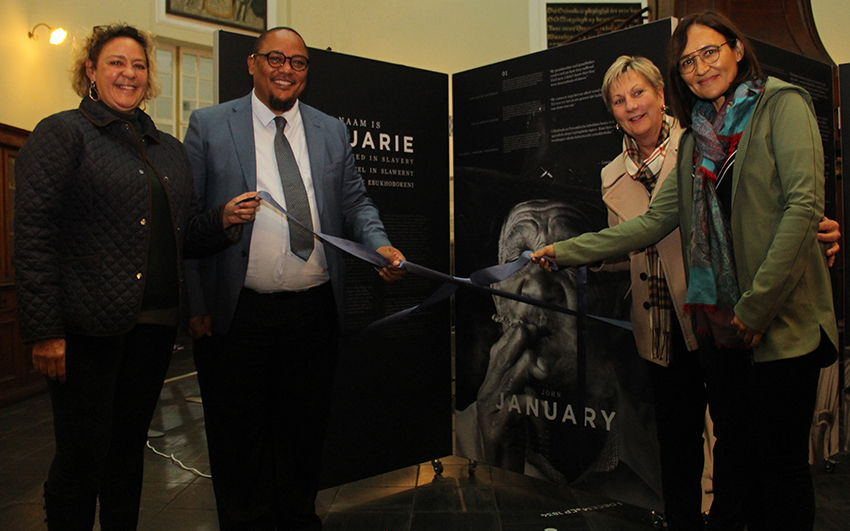
News
‘My Name is February’ tells Cape’s slave history with help from descendants
The Western Cape Department of Cultural Affairs and Sport (DCAS) hopes a new museum exhibit on slavery will help raise awareness about the often unspoken history of the province, following its unveiling on Thursday, 4 July 2019.
“My Name is February” not only details the history of slavery in the Western Cape, but also gives the modern day descendants of those slaves the opportunity to have their voices heard.
The exhibit was officially opened by Minister Anroux Marais and DCAS Chief Director for Cultural Affairs Guy Redman, who both spoke about the important role it could play.
“At DCAS we are committed to building inclusive communities through the expansion of our museum services’ offerings by addressing previously hidden narratives. Exhibitions of this nature are an important means of cultural exchange, enrichment of cultures and development of mutual understanding, cooperation and peace among peoples,” Minister Marais said.
“This exhibition will indeed raise awareness regarding the once untold story while creating a sense of belonging to all descendants who now call the Western Cape home. Through this exhibition we pay tribute to the thousands of people forcibly uprooted from their homes in various parts of Africa and Asia, who were brought to the Cape and whose labour contributed to the building of South Africa’s cities, towns and farms. This often forgotten and neglected slave past has shaped our heritage not only at the Cape but in South Africa as a whole.”
Research has shown that between 1658 and the early 1800s over 63 000 men, women and children were abducted from their homes in places such as Madagascar, Mozambique, Zanzibar, India and the islands of the East Indies such as Sumatra, Java, the Celebes (now known as Sulawesi), Ternate and Timor and brought to the Cape as slaves.
Slaves were stripped of everything once they landed at the Cape of Good Hope, then still under the rule of the Dutch East India Company. They were also renamed at their slave masters’ whim and for many, this was the calendar month in which they arrived.
Today thousands of South Africans still bear these surnames and some of them were asked to tell their personal stories for the exhibit.
“What is missing from the history of our country are the voices of you, ordinary South Africans. Most of the voices we hear are from historians, and we have a lot of respect for historians, but it’s very important that the people who are being spoken or written about begin to express themselves in places such as these, which are normally seen as academic places,” said Mr Redman.
“Museums are not academic places. Museums are places where we should express ourselves, share knowledge and feel safe while doing it. We want others who come here to be able to engage our colleagues who run this place.”
“My Name is February” is a traveling exhibit and is currently being displayed at the SA Sendinggestig Museum in Long Street, Cape Town. It will, however, be shown at several affiliated museums around the Western Cape.
The Western Cape Government works to ensure that museums are able to play a role in shaping South Africa’s future. BETTER TOGETHER.
Head of Communication Service
Department of Cultural Affairs and Sport
Tel: 021 483 9877 / 076 093 4913
E-mail: Tania.Colyn@westerncape.gov.za





